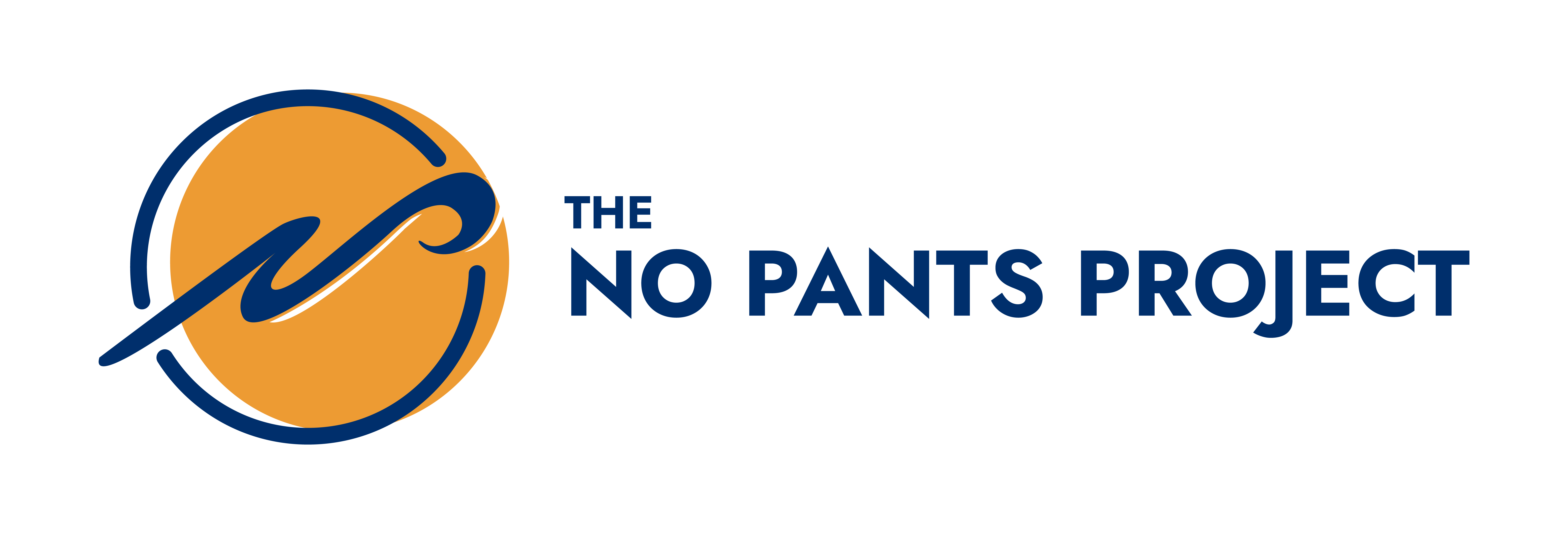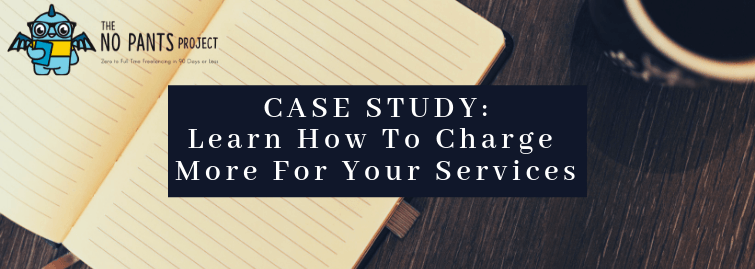I spent months putting off the launch of my freelance business, because I was freaked out about the sales process.
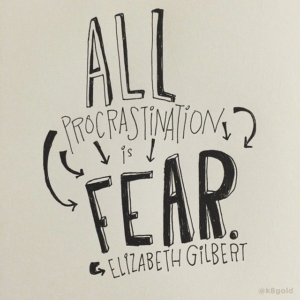
When I finally sucked it up and started reaching out to prospects, I figured it would take months before I’d be comfortable, but it didn’t take months.
It didn’t even take weeks.
There are at least 10 things I’ve learned about selling and talking to potential clients during my time in The No Pants Project.
The first (and maybe most important) one being…
Lesson 1: Action is the antidote to anxiety.
As soon as I applied what I’d learned in The No Pants Project, my fears and insecurities practically evaporated overnight.
Learning is exponentially more effective when paired with Doing.
These are the key concepts I acted on to calm my nerves before meeting with potential clients, talk about my prices without hesitation or apology, and stop worrying once and for all about coming across like a sleazy salesperson.
Lesson 2: Focus on service. Feel instantly calmer.
A few weeks ago I had a discovery call with a prospect I found incredibly intimidating for some reason.
I’m not entirely sure why the thought of talking to her made my palms sweat, but I knew I didn’t stand a chance of earning her trust if I acted like someone with a massive inferiority complex.
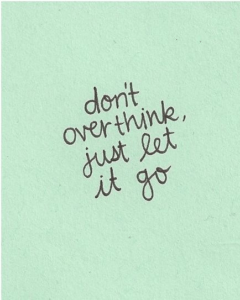
Since sales success hinges largely on your ability to relax, it makes sense to include relaxation as part of your preparation.
I’m gonna just jump ahead now, and tell you how I did on that discovery call:
I rocked it.
The way I went from freaking out to freaking awesome was by getting crystal clear about my purpose at the most fundamental level:
Service and helping.
I stopped trying to anticipate or predict what my prospect might think of me as a person.
I let go of all of it except my intention to serve.
It was that mind-blowingly simple.
If the Imposter Syndrome started to kick up again, I just returned my focus to this truth:
All I’m trying to do here is help, so why would I apologize or worry about it?
And…
If we’re a good match, if my solutions fit her problems, I’ll do my best to make her life easier, better, or richer. Maybe all of the above.
Either way, we’re just having a conversation.
Another thing I picked up from Mike Shreeve and The No Pants Project is a concept called Outcome Independence, and it’s a game changer for curing sales anxiety.
Bonus: Mike’s Secret Weapon For Mindset Adjustment
Lesson 3: Depend on Outcome Independence.
Neediness is a spectrum.
On one side we have desperation, which is neediness at its most dysfunctional.
On the other side we have outcome independence, which is the opposite of that.

I’ll be honest. When I first encountered the concept of outcome independence, it sounded sort of like a zen riddle to me.
So let me get this straight. I should prepare, but I should not care?
What I quickly realized, though, is that it’s not just an abstract mental exercise, and it’s a lot easier to figure out than a zen riddle.
(Still, if you’ve studied mindfulness or meditation, you’ll probably recognize parallels between this and the Art of Detachment.)
For me, the easiest way to reach a state of outcome independence before any given sales call, is to maintain a steady flow of interaction with multiple leads, prospects, and clients at all times.
To use a familiar fishing metaphor: Cast your net far and wide.
For that matter, cast multiple nets, my friend.
And while you’re at it, why not set up a row of fishing rods in holders?
With an operation like that, one bite on one line, isn’t gonna make or break you. Neither is one fish getting away, or one line snapping, or one rod breaking.
Because right next to a lost line, there’s another line in the water.
By that same token, the more emails you send, the less you depend on the outcome of any one message.
And the more conversations you have with potential clients, the less attached you are to any one prospect.
Lower attachment = lower neediness = Higher levels of acceptance
Lesson 4: As for your prices, be direct and collect.
Each of us has a unique relationship with money.
Mine could best be described with that old Facebook chestnut: It’s complicated.
So trust me.
If I can bring up pricing with the laissez-faire attitude of a flight attendant selling five-dollar peanuts (and I totally do!), then you can talk about your prices too.
I promise.
Check this out: When I’m completely direct and unflinching about my rates, the responses are overwhelmingly positive.
You might want to go back and read that sentence again. Slowly.
Go ahead. I’ll wait.
No?
Too busy to re-read my profound truth?
Okay, I get it.
Here’s something you should relate to then: Clients are even busier than you are.
They don’t have time to linger over anything, much less chase down or guess about vital details, like your service pricing.
Inefficiency isn’t the only downside from failing to mention your rates. You’re also inviting any number of incorrect or negative conclusions.
Your prospect could think you’re intentionally hiding something, or trying to pull some kind of negotiation mind game.
On the brighter side, they might just assume you work for free (or for way less than your actual, and thus far undisclosed, rates).
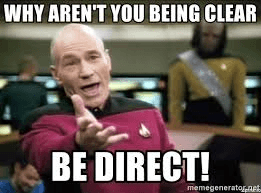
Even if a prospect correctly concludes that you failed to bring up pricing because you’re too shy or not confident enough yet, is that really the impression you want to make?
Probably not.
So, instead, be direct.
Lesson 5: Plan your transition to the topic of pricing.
Once a discovery call is scheduled, I pick a time within that call to serve as a deadline for bringing up my prices.
If a meeting starts at noon, I might put a Post-it on my computer that says 12:20 = PRICING!
If I haven’t broached the subject by then, I take a deep breath and just dive right in.
It doesn’t have to be pretty. In fact it’s perfectly fine to feel clumsy, awkward, or nervous.
And if you feel all those things at the same time? Do it anyway.
Here’s one of my recent excerpts.
Me: “Okay, you’ve given me so much great information, and the clock is quickly winding down, so I’m thinking I should jump into my pricing now if that’s okay.”
Prospect: “Oh, great! Yes. Thank you.”
Excuse me? She said, “Oh, great?”
And then she actually said, “Yes?”
And she also thanked you… Like for real?
Yes, Yep, and Yaassss.
I’m not making this stuff up.
Does this mean I’ve only encountered 100% joy and enthusiasm in response to my prices?
Please. This isn’t Narnia.
Yes, I’ve had a couple of subtle double-takes at some of my higher price points, but in the grand scheme, those were minor, pocketed moments that didn’t lower the overall positive responses.
Lesson 6: Talk about pricing in ranges.
Beyond first-tier services (we call these appetizers in No Pants Land), I find it’s easiest to introduce my pricing in ranges.
- One size does not fit all.
Price ranges allow you to customize packages and offers based on a client’s unique needs and circumstances.
Let’s say you offer a project fee of $1,500. It’s a fair rate that’s within your prospect’s budget. So logic tells us he should be happy to accept.
The problem is that we don’t make spending decisions based on logic.
Unless your prospect is a robot, the only thing you can assume is that he has money biases and baggage, just like the rest of us.
If he knows that $1,500 is part of a range that goes to $5k, your prospect might get more excited about a perceived “savings” of $3,500, rather than the actual value of spending $1,500.
So let him be excited about that.
He’s only human. And humans love a good deal.
Lesson 7: Not everyone can afford you, and that’s okay.
I’m okay if a prospect hesitates after hearing my prices.
And if my low-end is still too high for someone, I’m okay with that too.
Even when someone’s I’m not sure turns into a firm No, based on my prices — still okay.
In none of the above scenarios will I allow myself to feel shy or apologetic about my prices.
Here’s why:
- I know my market.
Unless a prospect is shopping for my services on Upwork, my rates are totally reasonable. And if they are shopping on Upwork, we’re not a good fit anyway. - I’m not running a charity, and neither are my clients.
- When I’m confident I can actually help someone, my prices are the conduit for making that happen. And all I’m really trying to do here is help. Why would I apologize for that?
Lesson 8: Your Best Angle = You, No Additives
It’s a scientific fact that clients are human. And humans relate to humanity, so don’t hide yours.
I’ve gotten my best, most positive results by being myself.
No put-ons. No slick moves.
Think about it: Do you want to work with people who put on airs or try to act slick?
Clients are the same way.
The problem is that “Be yourself!” is a cousin of “Just relax.”
There can be a vast gulf between knowing or wanting to do it, and actually being able to do it.
Breaking free from our masked selves takes practice.
And like any practice:
- it’s ongoing, not a one-and-done destination
- it gets easier over time.
The best news, though, is that even though authenticity is a practice, there are no prerequisites or long lead times.
You can start being real right now.
World renowned expert on vulnerability, Brené Brown, says, “This whole idea that we’re either courageous or we’re chicken is just not true, because most of us are afraid and brave at the exact same moment.”
To be authentic often means opening yourself up to being vulnerable.
Check out Dr. Brown’s interview with productivity icon, Tim Ferris.
Lesson 9: Email is your Authenticity Gateway.
The prospect I mentioned earlier was a complete stranger when she agreed to meet with me over the phone.
Before we could have a conversation about her business, or discuss my ideas for solving her problems, or review my pricing, I first had to introduce myself, and I did that with a “cold” email.
In her reply, she mentioned getting email “like this” every single day, but she’d never responded to one before mine.
And now she’s my client.
I learned the entire cold-outreach process from The No Pants Project, and used super easy templates as my guide to get started.
It was one of the things I dragged my feet to implement, because I’d convinced myself it couldn’t possibly be as easy as the program made it seem.
And then it was that easy.
In fact it was actually kind of fun.
I landed that particular client from the very first batch of emails I sent.
One of the things I’ve come to appreciate about cold-outreach email is that it’s great practice for being authentic in the sales process.
It gives you time to reflect and check yourself in a way that live conversation doesn’t allow.
- Write a first draft.
- Look for red flags of phoniness.
- Replace those flags with your real voice.
Use templates as frameworks, not boilerplates, to structure your email.
Add your personality and voice, and prospects can’t help but pause and take note.
I do declare! Is that a real human being in my inbox?
Lesson 10: Read your words out loud.
“Write like you talk” is another variation on “Be yourself.”
What sounds simple in theory can be hard to implement, especially when you factor in all our training and conditioning about form and formality with putting words to paper.
The simplest way to write like you talk is to make talking part of your writing process.
Dictation and transcription tools let you literally talk your words into text, and there are tons of options for every budget. It seems like lots of peeps in my Pants-free tribe are keen on Rev and Temi for transcription.
But regardless of your drafting method, you should read important emails out loud before finishing.
Something that looks perfectly fine on paper or screen, can sound completely different when you hear it.
Listening to your words is the easiest way to root out anything that doesn’t ring true to you, and it’s a lot easier to show up for a sales call as your real self if you’ve already shown up as yourself in the email that preceded it.
Work is exponentially more satisfying when you get to be you, all the way through.
Conclusion
You can’t succeed as a freelancer if no one buys your services, and no one’s buying if you’re not selling.
Quick recap of the 10 things I’ve learned about selling from The No Pants Project:
- Action is the antidote to anxiety. The sooner you take action, of ANY sort, even the smallest step, you’ll be AMAZED at how immediately the anxiety subsides.
- Focus on service: If selling makes your heart race, try to stop thinking about it as selling, and start thinking about it as service. It’s you trying to help, and having a conversation. That’s it. No apology needed here.
- Let go of outcomes: Do your homework, but don’t obsess about the results or allow desperation to cloud your mindset. Desperation repels. Outcome independence is the opposite of desperation.
- Approach pricing like a pro: Present your value and your prices without hesitation or apology. Clients appreciate when you make things easy, so don’t sit on important details like how much it costs to work with you!
- Pick a specific time to talk about pricing: Post a reminder to bring up pricing at a certain time during your sales call. When that time comes, just dive right in. Your prospects will appreciate that you’re making it easy for them.
- Use price ranges & anchoring: We humans aren’t all that logical about spending decisions. We tend to get more excited about perceived savings (if you offer a job for the low end of a 5k price range) than perceived value.
- It’s okay if someone can’t afford you: Pricing is a great way to qualify leads. If you can’t make your offers or pricing work for someone, don’t apologize. There are more fish in the sea!
- Be yourself: Are you a sleazy salesperson? Then why are you so worried about a potential client thinking you are? If you don’t want to be pushy or manipulative, then don’t be. And if a prospect doesn’t like it when you’re being authentic, then you should be grateful for figuring it out before you started working together.
- Start showing your authenticity in cold outreach email: Use email to share your real self in a low pressure way where you have time to reflect and root out those tendencies to act like someone else.
- Read your emails out loud: The easiest way to confirm that your writing is actually in your voice, is to read it out loud with your actual voice (not just the one in your head).
Are You Ready?
If you’re ready to get serious about freelancing, The No Pants Project is loaded with (even more!) game-changing, practical guidance about getting clients and living life on your terms.
You don’t have to figure everything out on your own.
